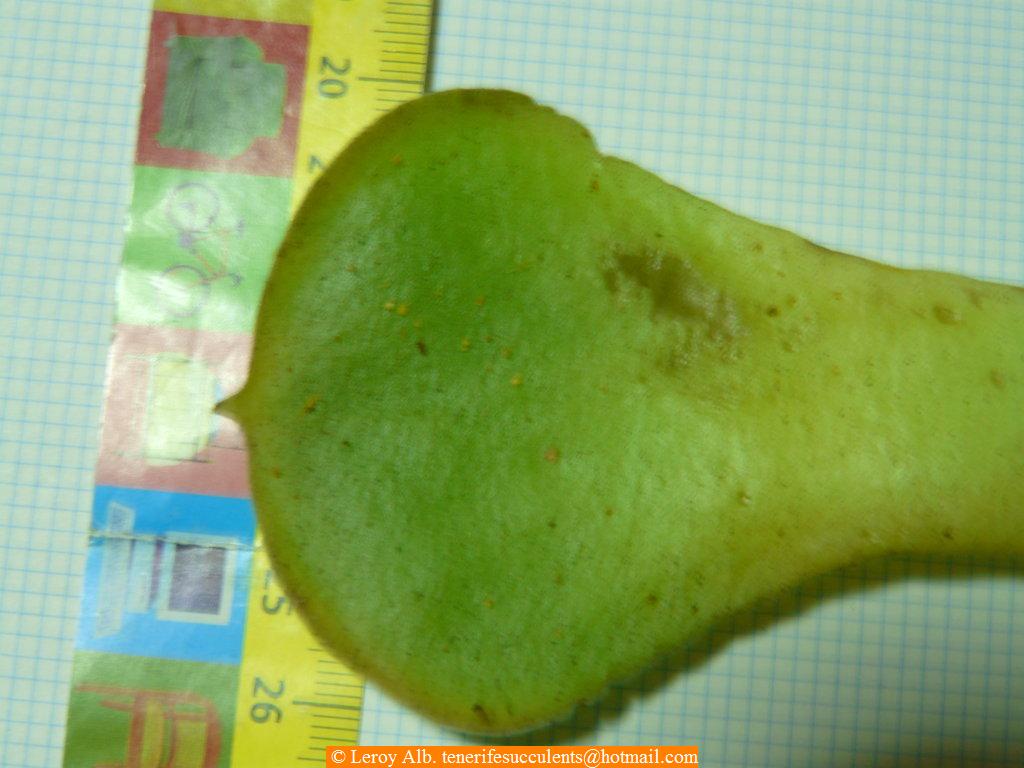Aeonium ciliatum (Willd.) Webb & Berth.
Shrub up to 1 meter high mostly branched, sometimes only single stemmed. Stem and branches mostly woody with prominent leaf-scars with in-between small tubercles . Leaves glabrous in a more or less lax rosette , green rather tick (5mm) and mostly with red margins, shortly spathulated, the apex apiculate, margin with broad-based cilia, about 10cm long by 5 cm broad. Inflorescences leafy, broadly pyramidal, pubescent (a lot smaller than by A. urbicum) 20/35cm long . Buds conical, twisted. Flowers 7 to 8 parted, greenish-white to pink .
From sea level up to 1400 meter. On rocks and slopes . Mostly in the Northern part of Tenerife rarely descending near to the Teno region. Also on the Island of La Palma
Often seen in company with the Aeonium urbicum. Freely hybridising with this last species, also exists a hybrid A. ciliatum X A. haworthii Praeger 1929 - A. ciliatum X holochrysum Praeger 1929 - A. ciliatum X nobile Praeger 1929 and A. ciliatum X palmense Praeger.

Aeonium ciliatum between Roque Negro and Chinamad
Aeonium ciliatum on the way to the Faro de Anaga
Aeonium ciliatum on a rooftop without any substrate
Aeonium ciliatum & Aeonium tabuliforme - Llanos del Draco near Batan
Aeonium ciliatum flowering Barr de Afur
Aeonium ciliatum flowering Barr. de Herques
Aeonium ciliatum in dry season - Chinamada
Aeonium ciliatum fa. cristata path Roque Negro to Chinamada
Aeonium cilatum fa monstruosa Barr de Afur









































